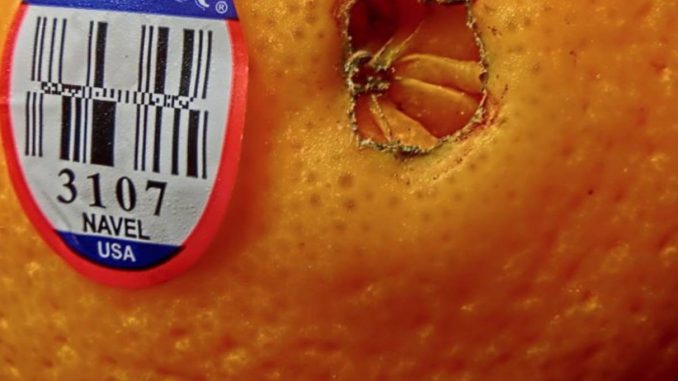
You’ve noticed them before, those small sticker labels on produce at the grocery store. You’ve probably mistakenly eaten one or two before. (Although made with a food-safe adhesive, it isn’t a good idea to eat the sticker.) This is a part of a grocery store “language” to help communicate information about each piece of produce. Have you ever wondered why those labels are there?
The PLU code on the label reveals more than just the price of any particular item. The PLU barcode tells the cashier what they need to know in order to ring up the item, but it also informs the consumer how that particular crop of food was grown. From the code on this sticker, we can learn if the product is organic or otherwise.
A PLU is made up of four numbers. If the sticker has only four numbers, then it indicates to the buyer that the product was grown with the use of pesticides. Bananas, for example, are marked with the four digit code of 4011, indicating that the produce has been treated with a pesticide, typically one that is approved for conventional or traditional farming.
Some PLU codes with have five numbers. If the number code starts with an 8, then the fruit is identified as genetically modified, meaning that scientific methods have been used to manipulate the fruit in some way, either to make it bigger or to make it more resistant to pests. If you’re trying to avoid genetically modified foods, then avoid produce PLUs that begin with the number 8; for example, a banana code would read as 84011.
Produce with a five digit code beginning with the number “9” is considered organically grown. This would mean that the farmer did not use pesticides or use genetically modified practices. An organic banana would then be labeled as 94011.
Why should we care about produce stickers? Well, if knowing where your food comes from or how it was grown is important to you, then these food labels can help you stay committed to making healthy choices for you and your family. Not every non-organic item in the produce section is loaded with pesticides, but these stickers can help you stay informed, especially when it comes to a particular group of foods that have been labeled “The Dirty Dozen” by the Environmental Working Group.
The Environmental Working Group has identified fruits and vegetables that fall into two groups. Fruits and vegetables under the “Dirty Dozen” category have a higher toxins count due to pesticide use. The dirtiest of the Dirty Dozen are strawberries, apples, nectarines, peaches, and celery.
Some fruits and vegetables naturally resist pests and therefore do not need pesticides, or the pesticide does not stay on the food itself. This group has been labeled by the Environmental Working Group as the “Clean Fifteen” and include avocados, pineapple, sweet corn, and pineapple.
Reading food labels and knowing which groups of products are more susceptible than others to pesticides can help us to know more about our food. This way, we can minimize our exposure to harmful chemicals or foods produced with genetic engineering. While not all produce is laden with harmful chemicals, we can use the information at our fingertips to make informed decisions.